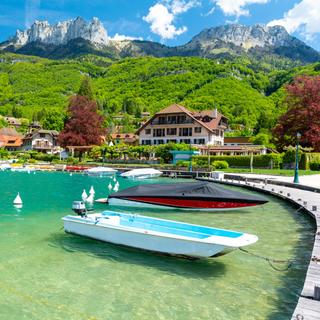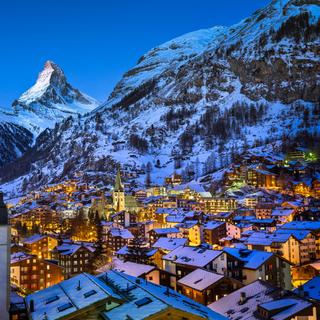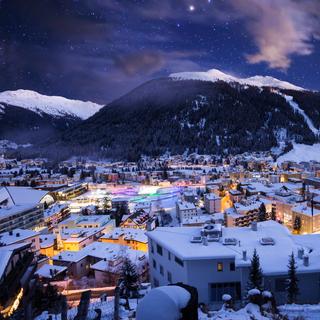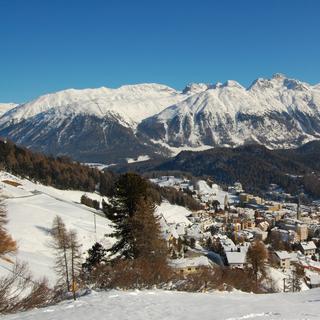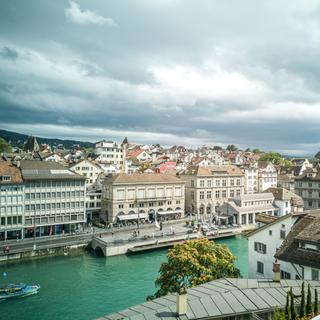
Lausanne weather and climate

Lausanne weather and climate
Day
25 °C
Night
13 °C
Precipitation
115 mm
in month
Rainy days
12 days
in month
Daylight
14 hours
average
Sunshine
7 hours
average
Humidity
70 %
Weather charts for Lausanne
Destinations nearby and activities
Destinations nearby
Activities in Lausanne

Find more destinations like this
Destinations with similar weather to Lausanne
Other destinations in Switzerland
Closest cities for Lausanne
Last week's weather in Lausanne
The week of 7 July 2025 - 13 July 2025 had an average daily temperature of 23 °C (73 °F) and a minimum (nighttime) temperature of 12 °C (54 °F). The current temperatures are slightly below the long-term average for Lausanne, with the daily and nighttime temperatures being 25 °C (77 °F) and 14 °C (57 °F), respectively. The beginning of the week saw Tuesday being the coldest day of the week. The average temperatures observed during different times of day (based on local time) were as below: 7am 14 °C (57 °F), 10am 19 °C (66 °F), 1pm 22 °C (72 °F), 4pm 22 °C (72 °F), 7pm 21 °C (70 °F), 10pm 15 °C (59 °F).
There were 4 days without rain, 1 day with light rain and 2 days with moderate rain during this week. During the whole week, total of 10 mm (0.39 in) of precipitation was observed, which is below the long term average for Lausanne, which is 26 mm (1.02 in). During the daytime (from dawn to dusk), there was 26 % cloud coverage on average.
Average speed of wind was 3.2 m/s. The most common wind direction(s) was North-East. The air pressure varied between 1008 hpa and 1022 hpa. The air in Lausanne had an average humidity of 68 %.
On average, there were 11 hours clear skies, 2 hours partially overcast skies, 2 hours overcast skies and 1 hour rainy weather during the daytime (from dawn to dusk). On average, the time of sunrise was 05:50, and the time of sunset was 21:26.
Weather overview for Lausanne
Weather overview
Located in Switzerland, the picturesque city of Lausanne is known for its overall temperate weather conditions. As the seasons change, the average daytime temperatures can vary from a cool 5 °C (41 °F) in the chill of January to a warm 25 °C (78 °F) in the balmy month of July. Night temperatures tend to be coldest in January, dipping to -2 °C (29 °F), while the warmest nights are typically in July with readings around 14 °C (57 °F). The precipitation patterns in Lausanne show September as the driest month with an average of 11 days rainy days, while May tends to be the wettest month, experiencing rain on an average of 15 days. One can observe fluctuations in humidity, wind speed, and sunshine duration throughout the year, enhancing the city's diverse climate profile.
January weather
In Lausanne, the minimum daytime temperatures are noted, averaging at 5 °C (41 °F), and the night temperatures also register their lowest, at an average of -2 °C (29 °F). The decrease in rainfall begins, totaling 86 mm (3.37 in) for the month. Humidity peaks, reaching an average value of 82 %.
February weather
As the temperatures start to climb, the daytime temperature averages 6 °C (43 °F), and the night temperature shows a slight increase as well, averaging -1 °C (30 °F). The lowest rainfall measurements are recorded, totaling 73 mm (2.88 in). The count of rainy days begins to decrease, settling at 11 days. Sunshine duration sees an uptick, averaging 3 hours.
March weather
The upward trend in temperatures continues, with the daytime temperature reaching an average of 11 °C (51 °F), and the nighttime temperature averaging 1 °C (34 °F). The number of rainy days starts to increase slightly, averaging 12 days, and there is a corresponding rise in the total rainfall amount, totaling 83 mm (3.28 in). Additionally, the increase in the hours of unobstructed sunshine can be observed, now averaging 4 hours. The highest wind speeds are also noted, averaging 2 m/s.
April weather
The upwards trajectory of temperatures persists, with the daytime temperature averaging 15 °C (58 °F), and the nighttime warmth is more noticeable too, at 4 °C (40 °F). The average number of hours with sunshine continues to grow, logging 5 hours.
May weather
Lausanne approaches tourist season with its daytime temperatures mirroring the previous month's growth, now at 19 °C (67 °F), and the nighttime readings also rise. The beginning of an increase in precipitation is recorded, now at 111 mm (4.36 in). The peak in the number of rainy days is observed, averaging 15 days. The upward trend in daylight hours persists, now at 6 hours.
June weather
The increase in tourist activity is evident. Daytime temperatures further rise, peaking at 23 °C (73 °F), and the nighttime warmth follows suit, with an average of 12 °C (53 °F). The onset of a decrease in rainy days is noticeable, with an average of 14 days, yet the peak in overall rainfall amount is still present, totaling 118 mm (4.64 in). The longest days of the year are here, with an average duration of 16 hours.
July weather
The tourist season remains in full swing. Daytime temperatures hit their peak, averaging 25 °C (78 °F), and so do the nighttime ones, reaching an average of 14 °C (57 °F). The decrease in rainy days continues, now averaging 12 days. The maximum sunlight hours are also present in July.
August weather
An observable beginning of a decline in both daytime, now at 25 °C (77 °F), and nighttime temperatures can be seen, averaging 13 °C (56 °F). The tourist season continues. The number of rainy days decreases once more, now at 12 days. Sunlight hours begin to recede as well, totaling 7 hours.
September weather
With the drawing close of the tourist season, the daytime temperature shows a similar decline as the previous month, with an average of 20 °C (69 °F), and the nighttime temperature also decreases, averaging 10 °C (51 °F). The minimum count of rainy days is reached, now at 11 days, along with the initial descent in total rainfall amount. The wind speed reaches its minimum, registering 2 m/s.
October weather
The downward trend in temperatures continues, with the daytime average at 16 °C (60 °F), and the nighttime average following, at 7 °C (45 °F). Sunlight hours keep declining, now at 4 hours.
November weather
The decreasing rainfall trend can be seen, with an amount of 93 mm (3.68 in). The night temperature shows a similar decline as the previous month, averaging 2 °C (36 °F), and the daytime temperature also sees a decline, now at 9 °C (48 °F). A dip in sunshine hours continues, with an average of 2 hours.
December weather
The trend of decreasing daytime temperatures is more prominent, averaging 6 °C (42 °F), as is the nighttime temperature, averaging 0 °C (31 °F). The hours of unobstructed sunlight reach their minimum. A slight increase in the number of rainy days can be observed, averaging 12 days. The shortest daylight hours of the year can be seen in December.
FAQs
What are the average day and night temperatures in Lausanne during January?
The average daytime temperature in January stands at 5 °C (41 °F), while the nighttime temperature drops to an average of -2 °C (29 °F) in Lausanne.
Can you tell me about the trend in rainfall and sunshine hours in Lausanne during February?
Rainfall in February tends to be at its lowest, with an accumulation of 73 mm (2.88 in), and there is an increase in sunshine hours, averaging 3 hours.
As spring advances, how do the temperature and sunlight change in Lausanne during March?
In March, Lausanne experiences a rise in temperatures with the daytime average at 11 °C (51 °F), and there is a notable increase in the hours of sunlight, now averaging 4 hours.
What shifts in weather should be expected in April, considering both temperature and sunshine?
One should expect a continuing increase in both the daytime and night temperatures, averaging 15 °C (58 °F) and 4 °C (40 °F) respectively, along with more hours of sunshine, around 5 hours.
How do the warm temperatures and rainfall in May impact the tourist season in Lausanne?
As tourism picks up in May, visitors enjoy warm daytime temperatures around 19 °C (67 °F), but should also be prepared for the peak number of rainy days, averaging 15 days.
What role do temperature and daylight hours play in Lausanne's June weather for tourists?
Tourists in June enjoy increased temperatures, averaging 23 °C (73 °F), while benefitting from the longest daylight hours of the year, at around 16 hours.
How do daytime temperatures and sunshine contribute to the height of the tourist season in July in Lausanne?
During the height of the tourist season in July, travelers can expect to experience the highest daytime temperatures, averaging 25 °C (78 °F), along with maximum sunlight hours.
As the tourist season continues, what are the changes in temperature and rain in Lausanne during August?
In August, there's a noticeable drop in temperature with daytime readings averaging 25 °C (77 °F), accompanied by a slight decrease in rainy days to 12 days.
Considering the temperature and rainfall, why is September considered pleasant for visiting Lausanne?
September is pleasant for visitors due to the mild daytime temperatures, averaging 20 °C (69 °F), and the reduced frequency of rainy days, with an average of 11 days.
What does the declining temperature and sunlight hours in October signify for Lausanne's weather?
October in Lausanne is marked by a decline in both daytime and nighttime temperatures, averaging 16 °C (60 °F) and 7 °C (45 °F) respectively, and a decrease in sunlight hours to 4 hours.
How do the cooling temperatures and diminishing sunlight influence Lausanne's November weather?
In November, cooling temperatures, averaging 9 °C (48 °F) during the day and 2 °C (36 °F) at night, coincide with diminished sunlight hours, now at 2 hours.
As the year comes to a close, what weather patterns do we observe in Lausanne during December?
December marks the year's close with the most noticeable dip in temperatures, reaching an average low of 6 °C (42 °F) during the day, and the shortest daylight and sunshine hours.


